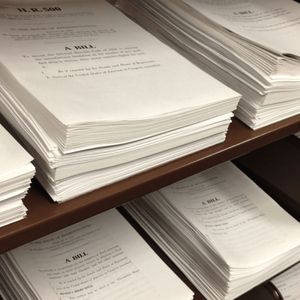BitcoinWorld Asia FX’s Turbulent Tumble: Unpacking US Trade Uncertainty and Fed Rate Cut Pressures Even in the volatile world of cryptocurrency, macro-economic shifts ripple through every asset class. The recent weakening of Asia FX and the precarious position of the US Dollar offer a compelling case study, highlighting how traditional financial market dynamics can profoundly influence investor sentiment and capital flows, even for digital assets. As global economies grapple with complex geopolitical landscapes and shifting monetary policies, understanding these foundational movements becomes paramount for any investor looking to navigate the broader financial ecosystem. What’s truly driving these shifts, and how might they impact your portfolio? Why is Asia FX Feeling the Heat? The currencies of several Asian nations have experienced a noticeable depreciation recently, a trend that analysts are closely monitoring. This weakening is not uniform across the board but rather a confluence of factors unique to the region, amplified by external pressures. One primary driver is the lingering specter of trade tensions, particularly between major global economic powers. When trade flows are disrupted or threatened, economies heavily reliant on exports, as many Asian nations are, face significant headwinds. This directly impacts their economic outlook, subsequently putting downward pressure on their respective currencies. Beyond trade, domestic economic conditions also play a crucial role. Slower growth projections in key Asian economies, coupled with varying levels of inflation and interest rate differentials compared to the United States, contribute to capital outflows. Investors seeking higher yields or safer havens may reallocate funds away from these markets, further exacerbating the depreciation of Asia FX . Consider the ripple effect: a slowdown in a major economy like China, for instance, inevitably impacts its trading partners across Asia, creating a domino effect on regional currencies. Key factors contributing to the pressure on Asia FX include: Export Dependence: Many Asian economies are heavily reliant on international trade. Any disruption to global supply chains or demand directly impacts their export revenues, weakening their economic fundamentals. Capital Outflows: When interest rate differentials widen in favor of the US or other developed markets, or when perceived risk in Asian markets increases, capital tends to flow out, reducing demand for local currencies. Domestic Economic Challenges: Internal issues such as high debt levels, inflationary pressures, or political instability within individual Asian nations can also deter foreign investment and weaken their currencies. Commodity Price Fluctuations: For commodity-exporting Asian nations, volatile global commodity prices can significantly affect their terms of trade and currency strength. Understanding these multifaceted pressures is essential for anyone tracking the pulse of the global currency market . The US Dollar ‘s Delicate Dance: Fragility Amidst Speculation While Asia FX faces headwinds, the US Dollar , traditionally seen as a safe-haven asset, is exhibiting its own unique vulnerabilities. Despite global uncertainties often bolstering the dollar, recent movements suggest a more nuanced picture. The primary factor influencing the dollar’s current fragility is the pervasive speculation surrounding potential Fed Rate Cuts . Markets are increasingly pricing in the likelihood that the Federal Reserve will begin lowering interest rates in the near future, a move that typically diminishes the attractiveness of a currency by reducing its yield advantage. A weaker dollar has mixed implications. For US exporters, it makes their goods cheaper and more competitive abroad, potentially boosting corporate earnings. For countries holding significant dollar-denominated debt, a weaker dollar eases their repayment burden. However, for investors seeking high returns from dollar-denominated assets, a lower interest rate environment makes these investments less appealing compared to alternatives, potentially leading to capital reallocation. This delicate balance means the dollar’s trajectory is under intense scrutiny, with every Federal Reserve statement and economic data release scrutinized for clues. The dollar’s recent performance reflects this internal conflict: Safe-Haven Demand: In times of extreme global stress, the dollar often benefits from its status as a reserve currency and safe haven, attracting inflows. Yield Differential: The expectation of lower US interest rates reduces the yield advantage of dollar-denominated assets, making other currencies or asset classes more attractive. Economic Data: Weaker-than-expected US economic data can reinforce rate cut expectations, putting downward pressure on the dollar. Conversely, strong data might provide temporary support. The interplay between these forces means the US Dollar ‘s strength is far from guaranteed, making it a critical component of the broader currency market narrative. Navigating the Storm of Trade Uncertainty The persistent shadow of trade uncertainty looms large over global financial markets, directly impacting currency valuations and investor confidence. While tariffs are a direct manifestation of this uncertainty, the broader implications extend to supply chain disruptions, shifts in manufacturing bases, and a general reluctance by businesses to commit to long-term investments. This environment of unpredictability makes it challenging for businesses to plan, leading to reduced international trade volumes and, consequently, less demand for currencies involved in these transactions. Consider the impact on specific sectors: industries heavily reliant on international trade, such as technology, automotive, and agriculture, are particularly vulnerable. A sudden imposition of tariffs or a breakdown in trade negotiations can send shockwaves through these sectors, affecting their profitability and employment figures. This, in turn, can dampen overall economic growth prospects for nations deeply integrated into global supply chains. For emerging markets, especially those in Asia, their economic fortunes are often closely tied to global trade dynamics, making them acutely sensitive to any shifts in policy or sentiment related to trade. The current climate of trade uncertainty is a significant headwind, pushing investors towards more defensive positions and away from riskier assets, including certain currencies. Key impacts of trade uncertainty include: Reduced Global Trade Volumes: Businesses become hesitant to engage in cross-border trade due to unpredictable costs and market access. Supply Chain Restructuring: Companies may re-evaluate and re-shore or near-shore production, leading to long-term shifts in global manufacturing. Investment Deterrence: Businesses delay or cancel foreign direct investments due to the unclear regulatory and economic landscape. Currency Volatility: Currencies of trade-dependent nations become more susceptible to rapid fluctuations based on trade headlines. This ongoing saga of trade tensions continues to be a major determinant of movements in the currency market , influencing everything from the strength of the US Dollar to the stability of Asia FX . The Anticipated Ripple of Fed Rate Cuts : What Does it Mean? The prospect of Fed Rate Cuts is arguably the most dominant theme currently shaping global financial markets, with profound implications for the US Dollar and currencies worldwide, including Asia FX . Central banks use interest rates as a primary tool to manage inflation and economic growth. When a central bank cuts rates, it typically aims to stimulate economic activity by making borrowing cheaper, encouraging spending and investment. However, for a currency, lower interest rates make holding that currency less attractive to foreign investors seeking higher returns, potentially leading to depreciation. The market’s anticipation of these cuts is often as impactful as the cuts themselves. Traders and investors adjust their positions well in advance, moving capital in anticipation of future yield differentials. If the Federal Reserve signals a more aggressive rate-cutting cycle than expected, it could lead to a more significant weakening of the dollar. Conversely, if economic data remains strong and the Fed delays cuts, the dollar could find renewed support. This delicate dance of expectations versus reality keeps the currency market on edge. Consider the potential scenarios and their impacts: Scenario Impact on US Dollar Impact on Asia FX Aggressive Fed Rate Cuts Significant weakening (less attractive yield) Potential strengthening (capital flows back to Asia, less competitive dollar) Delayed/Fewer Fed Rate Cuts Potential strengthening (retains yield advantage) Continued pressure/weakening (dollar remains strong, capital outflows) Unexpected Global Crisis Initial strengthening (safe-haven demand) Significant weakening (flight to safety) These scenarios highlight the complex interplay between monetary policy and currency valuations. For investors, monitoring the Federal Reserve’s communications and incoming economic data is crucial for anticipating shifts in the currency market landscape. Understanding the Broader Currency Market Dynamics: What’s Next? The movements of Asia FX and the US Dollar are not isolated events but rather integral components of the vast and interconnected currency market . This market, the largest financial market in the world, is influenced by a myriad of factors, including interest rate differentials, economic growth prospects, geopolitical events, and investor sentiment. Understanding these broader dynamics is key to making informed decisions, whether you’re trading traditional currencies or assessing the impact on other asset classes, including cryptocurrencies. The current environment is characterized by a delicate balance of opposing forces. On one hand, global trade tensions and the threat of a slowdown in major economies exert downward pressure on risk-sensitive currencies, particularly those in emerging markets. On the other hand, the anticipated easing of monetary policy by the Federal Reserve could reduce the dollar’s allure, potentially offering some relief to other currencies. The key challenge for investors and policymakers alike is to discern which of these forces will dominate in the short to medium term. Actionable insights for navigating this complex environment: Diversify Portfolios: Consider diversifying across different asset classes and geographies to mitigate risks associated with specific currency movements. Monitor Central Bank Communications: Pay close attention to statements from the Federal Reserve, European Central Bank, Bank of Japan, and major Asian central banks for clues on future monetary policy. Track Economic Indicators: Keep an eye on key economic data points such as inflation, GDP growth, employment figures, and trade balances, as these directly influence currency valuations. Assess Geopolitical Risks: Be aware of geopolitical developments and trade negotiations, as these can trigger sudden shifts in market sentiment and currency strength. Understand Carry Trade Implications: With potential shifts in interest rate differentials, the profitability of carry trades (borrowing in low-interest-rate currencies and investing in high-interest-rate ones) will change, impacting capital flows. The currency market is a dynamic beast, constantly reacting to new information. Staying informed and agile is paramount for navigating its complexities and leveraging opportunities. Conclusion: Charting a Course Through Volatility The current landscape of global finance, marked by the weakening of Asia FX , the fragility of the US Dollar , and the overarching shadows of trade uncertainty and anticipated Fed Rate Cuts , presents a complex yet fascinating picture. These interconnected dynamics underscore the reality that no financial market operates in isolation. From traditional equities and bonds to the burgeoning world of cryptocurrencies, the ripple effects of these macro-economic shifts are undeniable. While volatility may persist, a deep understanding of these fundamental drivers empowers investors to make more resilient decisions. By staying attuned to central bank signals, geopolitical developments, and key economic indicators, market participants can better anticipate trends and position themselves to navigate the evolving global currency market with greater confidence. The path ahead is undoubtedly filled with challenges, but also with opportunities for those who are prepared. To learn more about the latest Forex market trends, explore our article on key developments shaping the US Dollar and interest rates liquidity. This post Asia FX’s Turbulent Tumble: Unpacking US Trade Uncertainty and Fed Rate Cut Pressures first appeared on BitcoinWorld and is written by Editorial Team


















